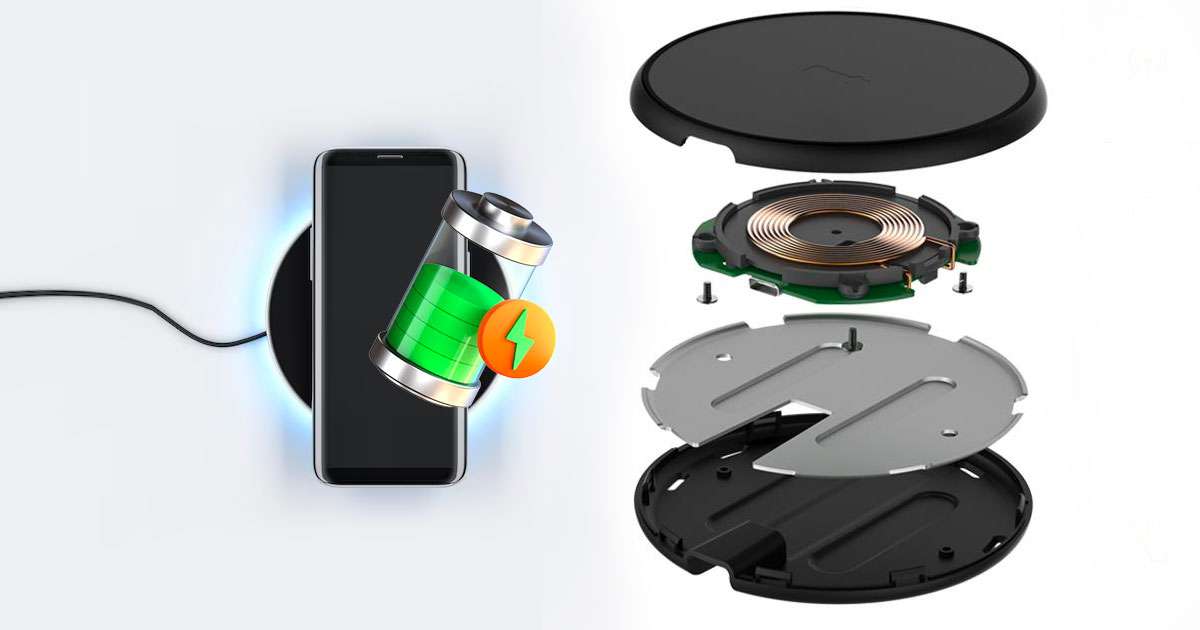The Mechanics of Wireless Charging: How Does a Wireless Charger Work?

Wireless charging is not a novel idea; in fact, the brilliant inventor Nikola Tesla came up with it more than a century ago. Tesla’s contributions during the late 19th and early 20th centuries established the foundation for modern technology. He envisioned a world in which power could be transmitted wirelessly, eliminating the need for power cords.
Researchers in Korea created the Online Electric Vehicle (OLEV), the first dynamic wireless charging system to be commercialized, in 2009. Since then, a wide range of products and industries, including electric vehicles and smartphones, have embraced the technology.
Recent studies have highlighted the benefits of wireless charging, including its convenience, reduction of clutter, and potential to extend the lifespan of devices by reducing wear and tear on physical charging ports.
Understanding Wireless Charging
Wireless charging is accomplished through a process known as inductive charging. This entails transferring energy between two objects—a charging pad, or transmitter—and the item that needs to be charged, or receiver—using an electromagnetic field. Via the electromagnetic field the coil on the charging pad creates, the device’s coil induces a current that charges the battery.
Smartphones are among the devices where wireless charging is currently used the most. The ability to charge a phone simply by placing it on a charging pad is a feature of many contemporary Android and iPhone phones. Over the years, wireless chargers for phones have become more efficient and capable of delivering faster charging times.
Using Pad and Magnetic Wireless Chargers
Pad Wireless Chargers
Pad wireless chargers are the most common type of wireless charger. They come in various shapes and sizes, but their main function is to provide a surface where you can place your device for charging. Here’s how you can use them:
Connect the Charging Pad to a Power Source
The majority of pad wireless chargers include a cable that you attach to a power outlet, like a wall socket or a computer’s USB port.
Place Your Device on the Pad
Once the charger is connected to power, simply place your device on the pad. The location may differ based on the charger and the gadget, but generally speaking, the device’s center should line up with the pad’s center.
Wait for Confirmation
Most devices will give a notification or show a symbol indicating that they are charging. Some charging pads also have LED lights that indicate when a device is charging.
Magnetic Wireless Chargers
Magnets are used by magnetic wireless chargers, such as Apple’s MagSafe charger, to precisely align the charger with the device. This ensures optimal charging efficiency. Here’s how you can use magnetic wireless chargers:
Connect the Magnetic Charger to a Power Source
Like pad chargers, magnetic chargers also need to be connected to a power source using the provided cable.
Attach the Charger to Your Device
Magnetic chargers are designed to attach firmly to the device. For instance, if you’re using Apple’s MagSafe charger, it will automatically snap onto the back of the iPhone 12 or newer models due to the built-in magnets.
Check Charging Status
Once attached, your device should indicate that it’s charging. The MagSafe charger, for example, triggers an animation on the iPhone screen confirming that charging has begun.
Always keep in mind that not every device can use every type of charger. Always check your device’s specifications to ensure it supports the type of wireless charging provided by your charger.
The Different Types of Wireless Chargers
The world of wireless charging has seen a significant expansion over the years, with various types and brands now available in the market. Here is a thorough list of the various kinds of wireless chargers, along with a few well-known brands:
Qi Wireless Chargers
Developed by the Wireless Power Consortium, this is possibly the most popular kind of wireless charger. Qi chargers use inductive charging and are compatible with most smartphones. Brands that offer Qi wireless chargers include Anker, Belkin, and Courant.
Radio Charging
Radio waves are used in this kind of charging to move energy from a transmitter to a receiver. Although it is not as widespread as Qi, this technology shows promise for use in the future.
Resonance Charging
Resonance charging allows for power transfer over greater distances compared to inductive charging. While not yet widely adopted, this technology has potential for charging electric vehicles and other larger devices.
RF Energy Harvesting
This method can charge devices several feet away by converting radio frequency signals into DC power. Although in its infancy, this technology has the potential to completely alter the way we perceive the process of charging portable electronics.
Infrared and Microwave Charging
These are less common methods of wireless charging, but they’re worth mentioning as they offer unique benefits. Infrared charging uses light waves to transfer power, while microwave charging converts microwave energy into electric power.
Among these types, Qi wireless charging is the most commonly used today due to its widespread compatibility with many smartphones and other devices. However, as wireless charging technology continues to evolve, we may see other methods, such as resonance charging and RF energy harvesting, gain more popularity.
A Look at Some of the Top Wireless Charger Brands
In terms of brands and specific products, here are some top choices available in the market:
Apple MagSafe Charger
The Apple MagSafe Charger is specifically designed for iPhone 12 and newer models. It’s a proprietary wireless charger from Apple that offers peak power delivery of up to 15 W. To use it, simply attach the MagSafe Charger to the back of your iPhone; the built-in magnets will guide it into place for optimal charging. The charger connects to a power source via a USB-C connector, so be sure to have a compatible adapter on hand.
Samsung Wireless Fast Charger
Samsung’s Wireless Fast Charger is a Qi-compatible device that delivers fast charging for compatible Samsung devices. This charger is simple to use; simply place your Samsung device on the charging pad, and the device will begin charging immediately. Its fast charging capability significantly reduces the time it takes to fully charge your phone.
Logitech Powered Pad
The Logitech Powered Pad is a versatile Qi charger that can charge multiple devices at the same time. This makes it a great option if you have several devices that need charging simultaneously. To use it, simply place your devices on the pad, and charging will begin immediately. The LED indicator indicates whether or not your device is charging and when it is fully charged.
Yootech Wireless Charger
The Yootech Wireless Charger is a budget-friendly Qi charger known for its reliability. Despite its affordable price, it offers efficient and safe charging. Connect the charger to a power source with the included micro USB cable before placing your device on the pad. A LED light indicates whether or not your device is charging.
RAVPower Fast Wireless Charger
The RAVPower Fast Wireless Charger is a Qi charger that stands out for its fast charging capability. It is made with cutting-edge technology to offer a rapid and effective charging option. To use it, connect the charger to a power source using the included cable, then place your device on the pad. You can tell when your device is charging and when it is fully charged thanks to the integrated LED indicator.
The Safety of Using Wireless Chargers
In conclusion, it’s important to note that wireless chargers are generally safe to use. They are designed with safety mechanisms in place to prevent issues such as overheating or overcharging. Like any other electronic device, though, it is important to use it sensibly and in accordance with the manufacturer’s instructions.
Remember to always purchase wireless chargers from reputable brands and ensure that they have the necessary safety certifications. Avoid using damaged or faulty chargers, as they can pose potential risks.
Without a doubt, wireless charging technology has improved our daily lives by being innovative and convenient. As long as we use these devices wisely and cautiously, we can enjoy the benefits they offer while ensuring our safety and the longevity of our devices. It demonstrates how technology is always developing and improving, making our lives easier and more productive.

